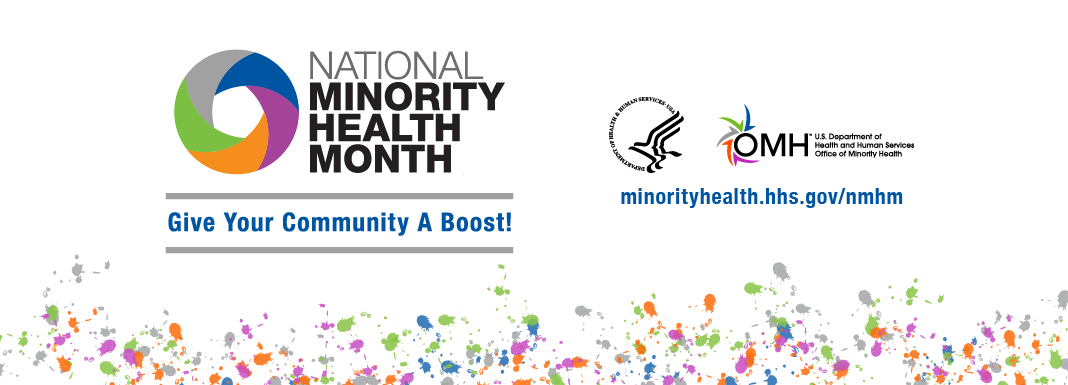April is National Minority Health Month. This year, the Department of Health and Human Services (HHS) Office of Minority Health (OMH) is highlighting the important role individuals and organizations can take in starting to reduce health disparities.
The theme for this year’s National Minority Health Month is “Give Your Community a Boost!” The theme focuses on COVID-19 vaccination, including boosters, as one of the best tools we can use to protect communities from COVID-19, which has disproportionately affected communities of color. CDC data show that Black or African American, Hispanic or Latino, and American Indian or Alaska Native people are at increased risk of getting sick, having more severe illness, and dying from COVID-19.
COVID-19 vaccinations are safe, effective, and free. Over 567,818,086 doses of vaccine have been administered. If you have questions about the vaccine, check out the CDC’s FAQ page.
Use these talking points from OMH to talk to your communities and organizations about health inequities and COVID-19:
- Systemic health and social inequities put many people from racial and ethnic minority groups at increased risk of getting COVID-19 or experiencing severe illness.
- More people from some racial and ethnic minority groups work in essential work settings than other groups of people. Essential work settings include healthcare facilities, farms, factories, grocery stores, public transportation, and other service-related jobs. Some people who work in these settings have more chances to be exposed to COVID-19.
- COVID-19 has affected racial and ethnic minority groups, and people who live in rural areas by causing more severe illness and death than in other groups because of low income, discrimination, and lack of healthcare access.
- Visit the COVID Data Tracker’s Health Equity page
 for data related to specific population and place-based groups.
for data related to specific population and place-based groups. - Check out the COVID-19 Health Equity Strategy from the CDC.
 It focuses on: reducing health disparities; using data-driven approaches; fostering meaningful engagement with community institutions and diverse leaders; leading culturally responsive outreach programs; and reducing stigma.
It focuses on: reducing health disparities; using data-driven approaches; fostering meaningful engagement with community institutions and diverse leaders; leading culturally responsive outreach programs; and reducing stigma.
Written by Rachel Burgun, MPH, RDN, LDN


